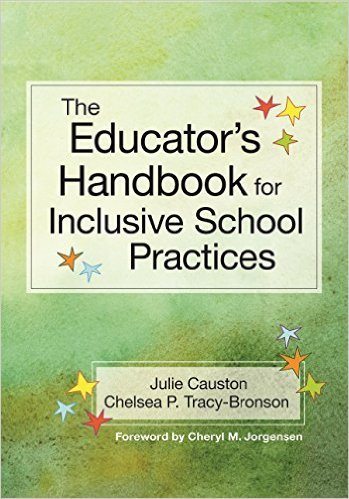
Introduction :
educators handbook :Education in the 21st century is evolving faster than ever. From digital learning platforms to the rise of AI and virtual classrooms, educators today face unique challenges—and exciting opportunities. Whether you’re a seasoned teacher, a student teacher just beginning your career, or an education administrator, having a reliable, modern guide is essential.
Welcome to the educators handbook: a comprehensive resource designed to empower teachers, support students, and help education professionals in the USA thrive in today’s dynamic learning environment.
1. The Role of an Educator in 2025
Gone are the days when teaching simply meant standing in front of a chalkboard. Today’s educators are mentors, tech navigators, mental health advocates, and community builders.
Key Responsibilities Include:
Emotional and Social Support: Addressing mental health and promoting SEL (Social-Emotional Learning).
Cultural Awareness: Embracing diversity and fostering inclusive classrooms.
Family and Community Engagement: Collaborating with parents and community partners to support learning.
Pro Tip: Start each semester with a student interest survey. Knowing your students helps tailor instruction and build trust.
2. Classroom Management Techniques That Work in educators handbook
It’s not about control—it’s about consistency, structure, and relationships.
Strategies to Implement:

Set Clear Expectations Early: Use a class contract or syllabus walkthrough from educators handbook
Establish Routines: Start each class with a bell-ringer activity.
Address Disruptions Calmly: Avoid public confrontations. Use proximity and private conversations.
Reward Positive Behavior: Use systems like ClassDojo or simple reward charts.
Remember: Students thrive on routine and respect. Be firm, fair, and consistent.
3. Digital Tools Every Educator Should Know as well as educators handbook
EdTech isn’t just a pandemic necessity—it’s the future. Knowing which tools to use can save time, boost engagement, and enhance learning.
Must-Have Tools:
LMS: Google Classroom, Canvas, Schoology
Engagement: Kahoot!, Quizizz, Nearpod, Padlet
AI Assistance: ChatGPT for brainstorming and lesson ideas, Grammarly for writing support
Productivity: Trello for planning, Notion for curriculum mapping, Canva for presentations
Caution: Teach students digital citizenship and responsible tech use alongside tool implementation.
4. Lesson Planning and Curriculum Design in educators handbook
Every great lesson begins with a clear objective and ends with meaningful assessment.
Smart Planning Tips:
Use Backward Design: Start with the end goals, then build activities that align.
Incorporate Multiple Learning Styles: Visuals, audio, movement, and discussion.
Blend Formats: Mix lectures with interactive tasks, videos, and group work.
Tools like Universal Design for Learning (UDL) frameworks can help make content accessible to all learners.
5. Assessment and Feedback in educators handbook
Assessment isn’t just about grades—it’s about growth.
Types of Assessments:
Formative: Quick checks like exit tickets, polls, or Google Forms.
Summative: Tests, essays, and projects.
Peer & Self-Assessments: Empower students to reflect and evaluate.
Feedback Tips:
Be specific, timely, and constructive.
Use voice notes or video feedback for personal touch.
Celebrate progress, not just perfection.
6. Supporting Diverse Learners
Inclusive classrooms are not a trend—they’re a necessity. Every student deserves access to meaningful learning opportunities.
Focus Areas:
ELL Students: Use visuals, scaffolding, and language buddy systems.
Students with Disabilities: Work closely with IEP teams and provide accommodations like extra time or alternative assessments.
Culturally Responsive Teaching: Reflect on biases, diversify content, and validate all student identities.
Tool Tip: Tools like Immersive Reader and Read&Write by Texthelp support accessibility.
7. Professional Development for Educators through educators handbook
Learning doesn’t stop after certification. Ongoing professional development is vital for staying current and energized.
Ways to Grow:
Attend Conferences: ISTE, EdSurge, and local education summits.
Join PLCs: Connect with peers online or in school-based groups.
Listen to Podcasts: Try Cult of Pedagogy, The EdSurge Podcast, or Angela Watson’s Truth for Teachers.
Take Online Courses: Websites like Coursera, edX, and ASCD offer affordable PD options.
8. Work-Life Balance and Educator Wellness
Burnout is real. Educators must prioritize wellness to stay effective and inspired.
Wellness Tips:
Set Boundaries: Don’t check work email after hours.
Use Planning Tools: Time-blocking or digital planners can streamline your day.
Practice Self-Care: Daily walks, journaling, meditation, or hobbies outside of school.
Seek Support: Talk to colleagues, mentors, or therapists when needed.
Reminder: You can’t pour from an empty cup.
9. Resources & Communities for educators handbook
You’re never alone. The education community is vast, generous, and always willing to share.
Online Communities:
Twitter/X: Follow hashtags like #EdChat, #EduTwitter, and #TeacherLife
Facebook Groups: Try “Educators Using Tech” or “Teachers Helping Teachers”
Newsletters: Subscribe to Edutopia, Education Week, or The 74
Blogs to Follow: Jennifer Gonzalez, We Are Teachers, Cult of Pedagogy
Conclusion of educators handbook
The world of education continues to evolve—and so must we as educators. Whether you’re navigating a hybrid classroom, exploring AI tools, or simply trying to reach that one hard-to-engage student, this Educator’s Handbook is your starting point.
Stay curious. Keep growing. And most importantly—remember the difference you’re making every day.


